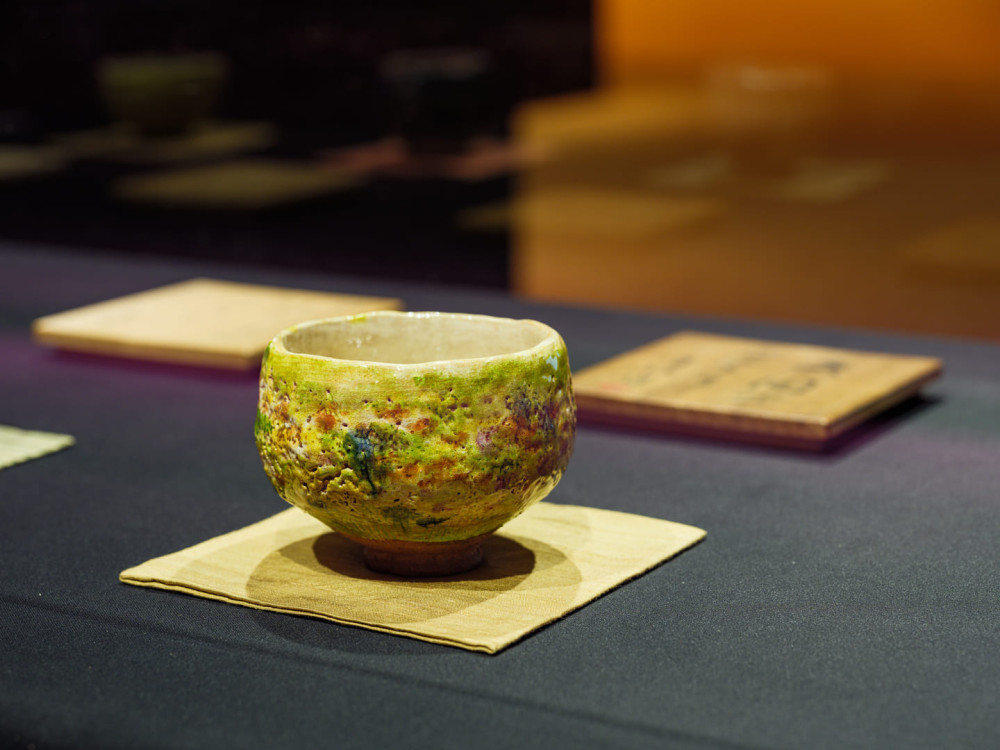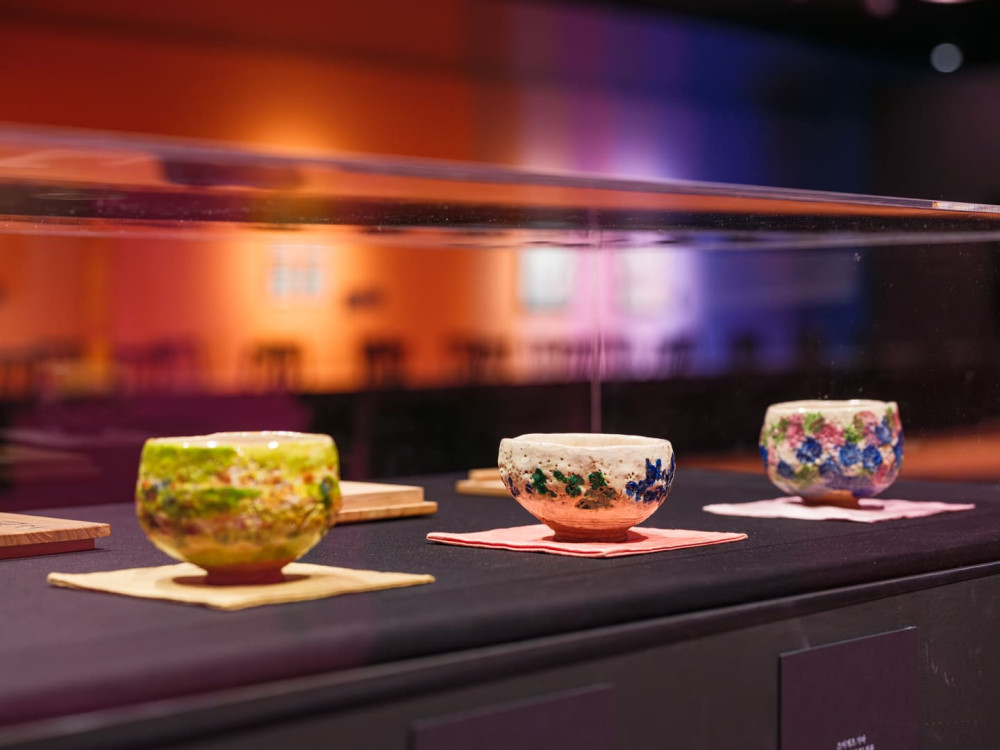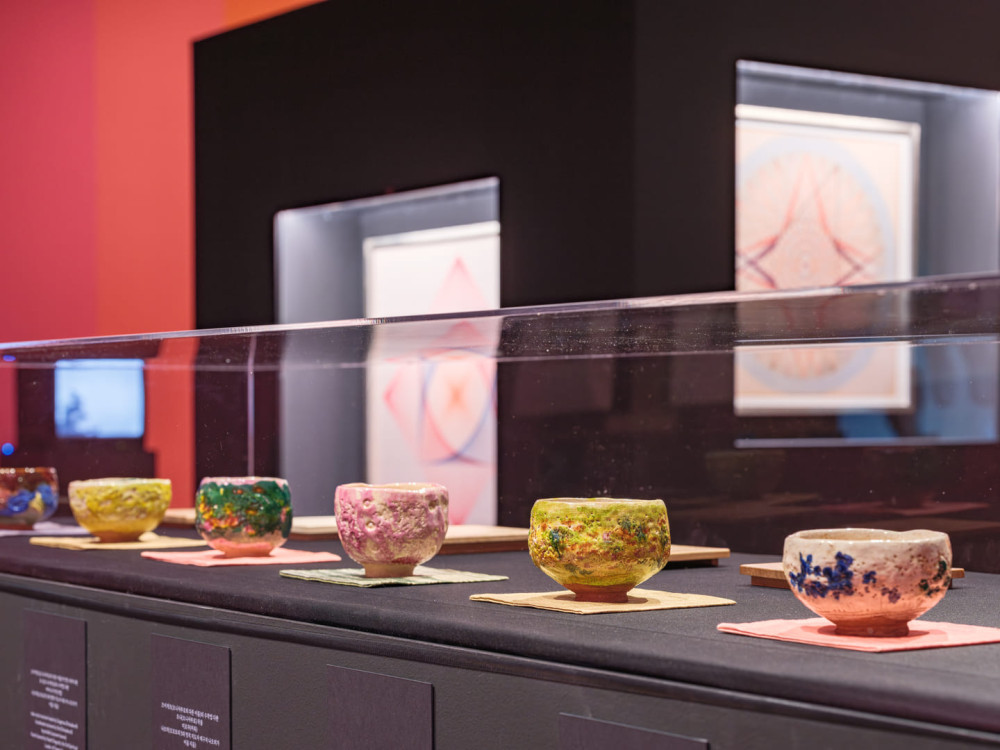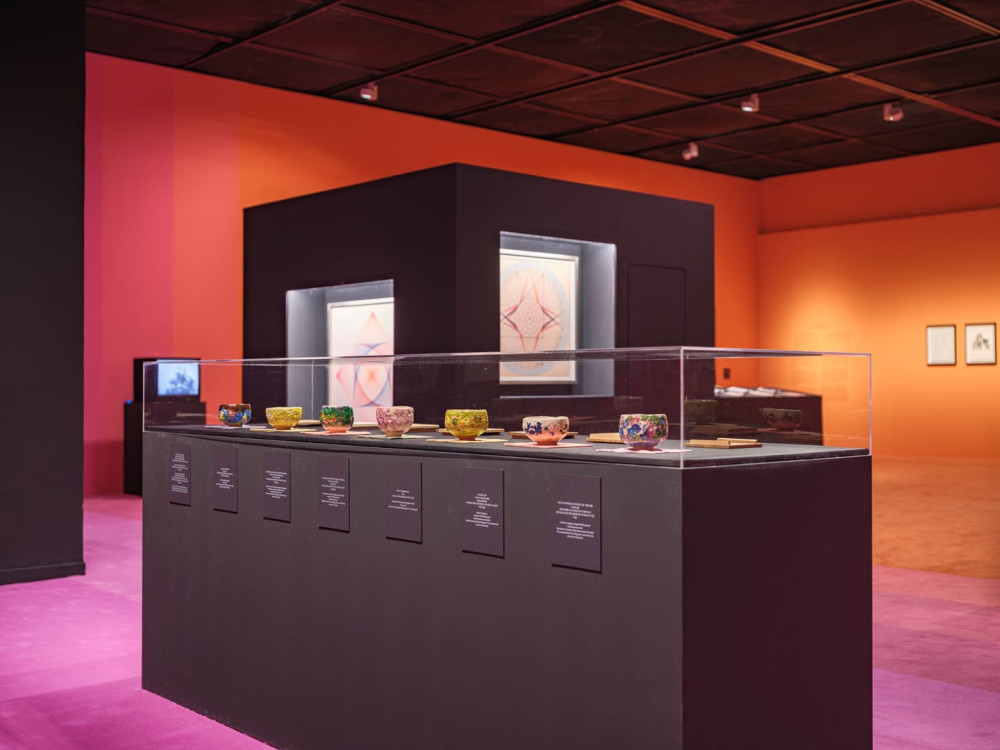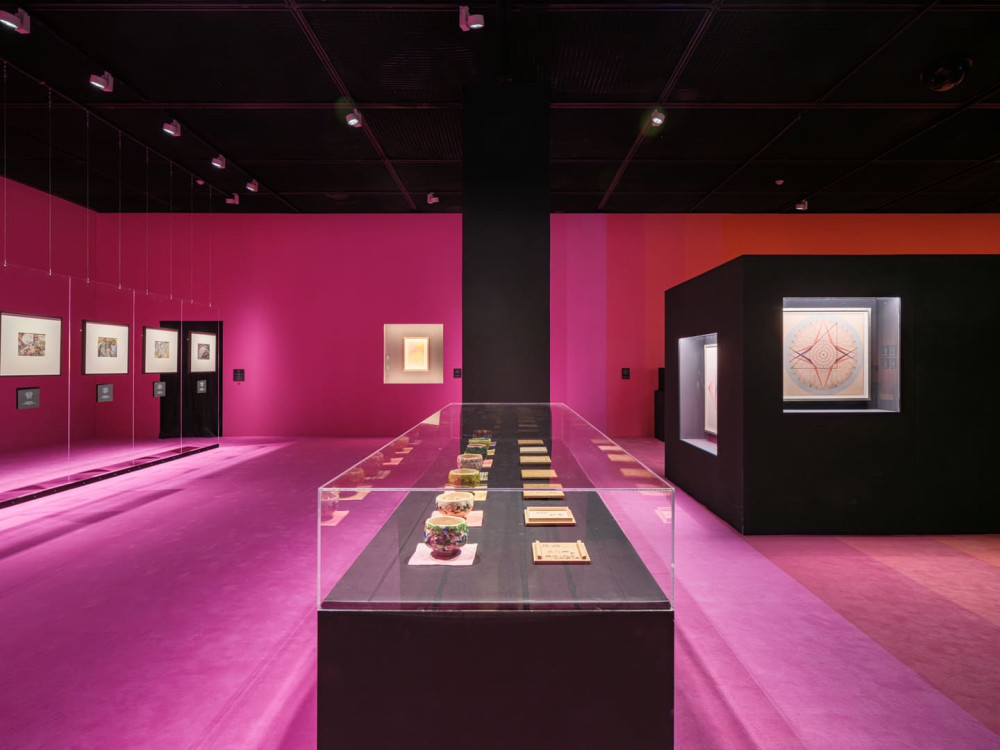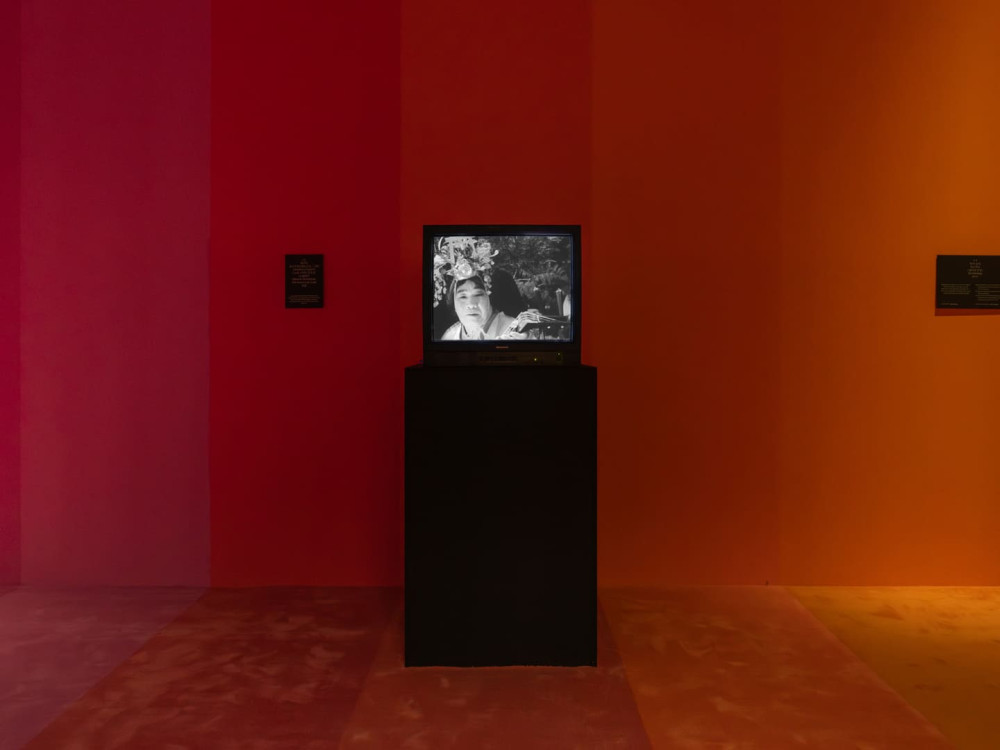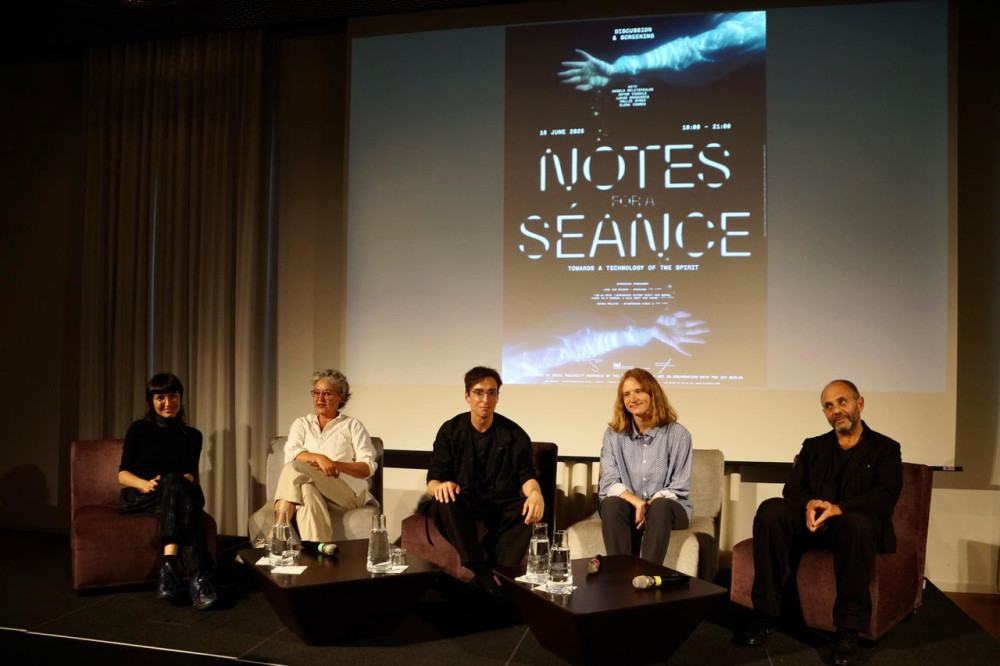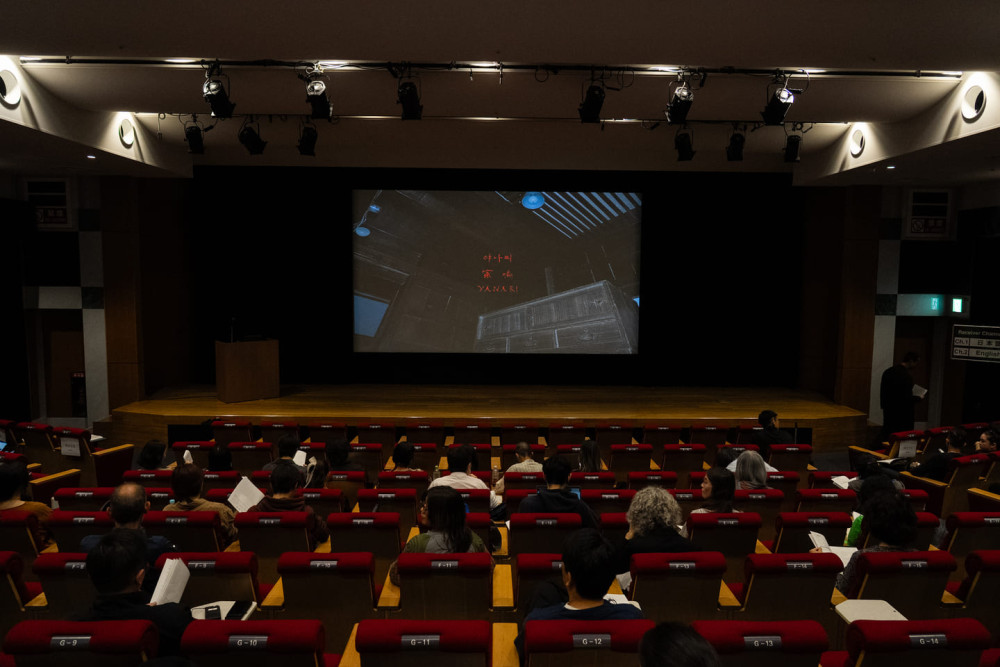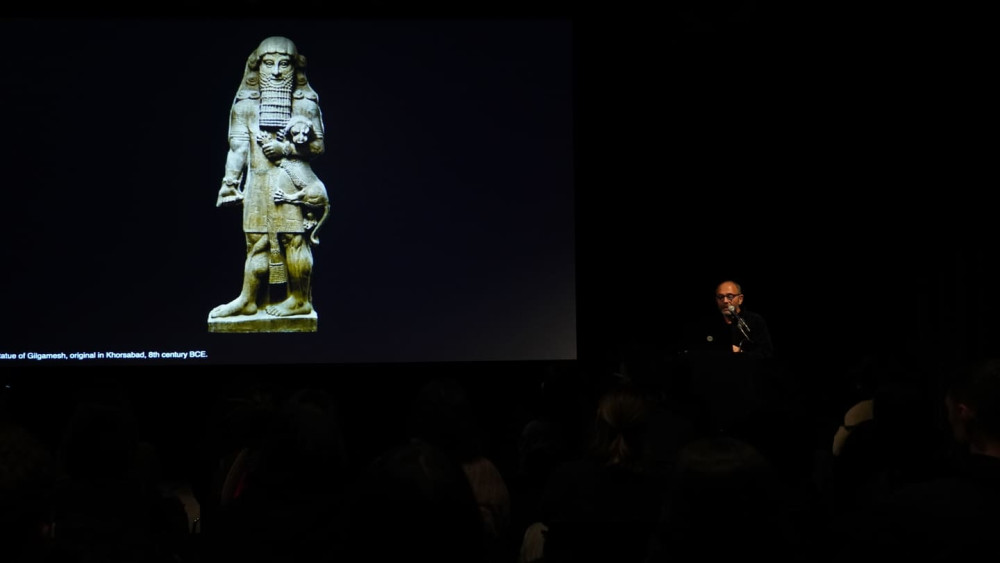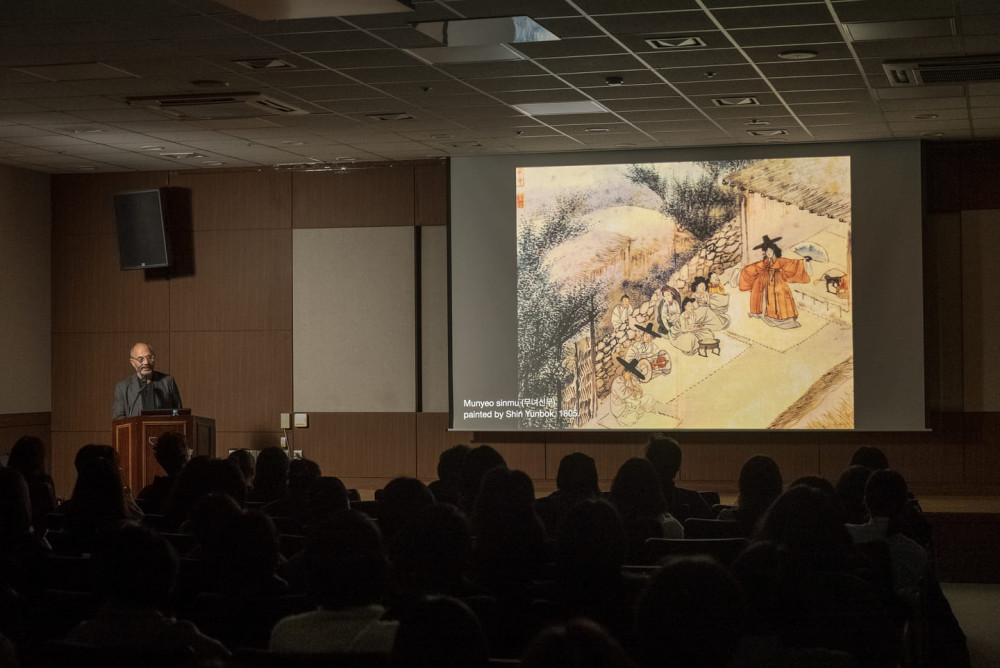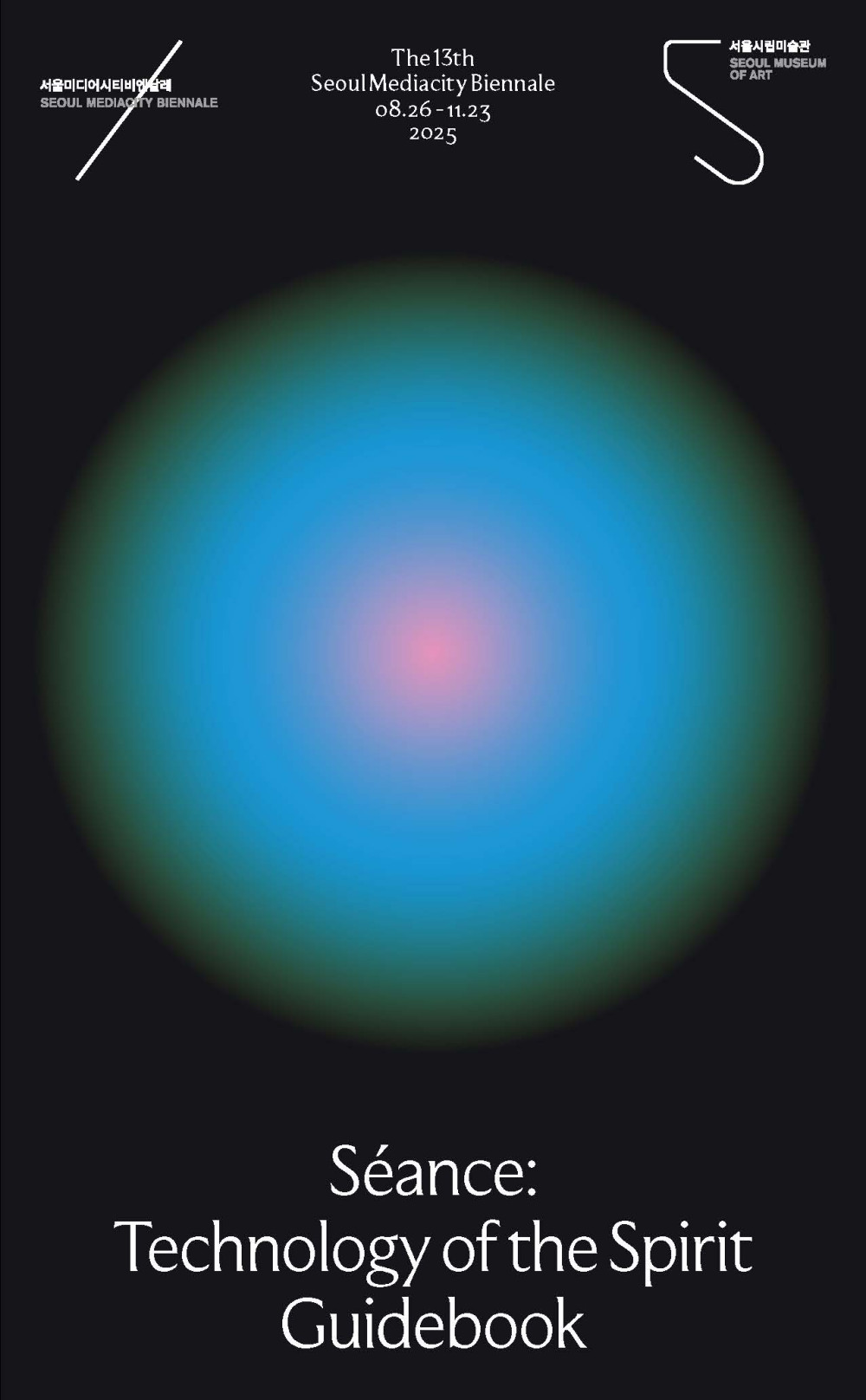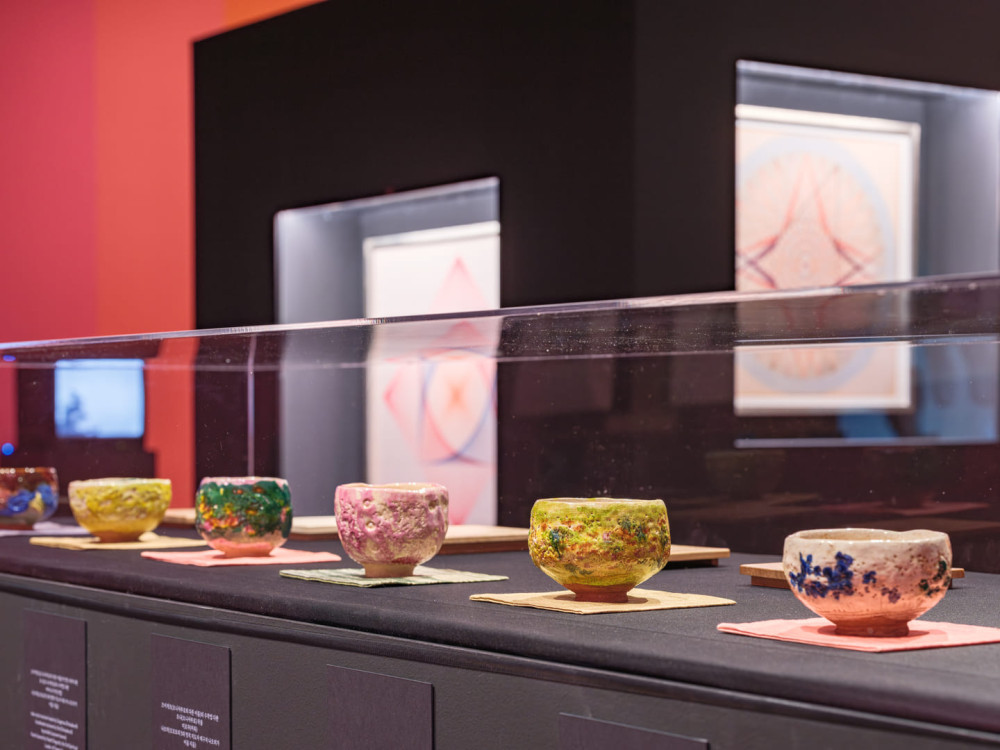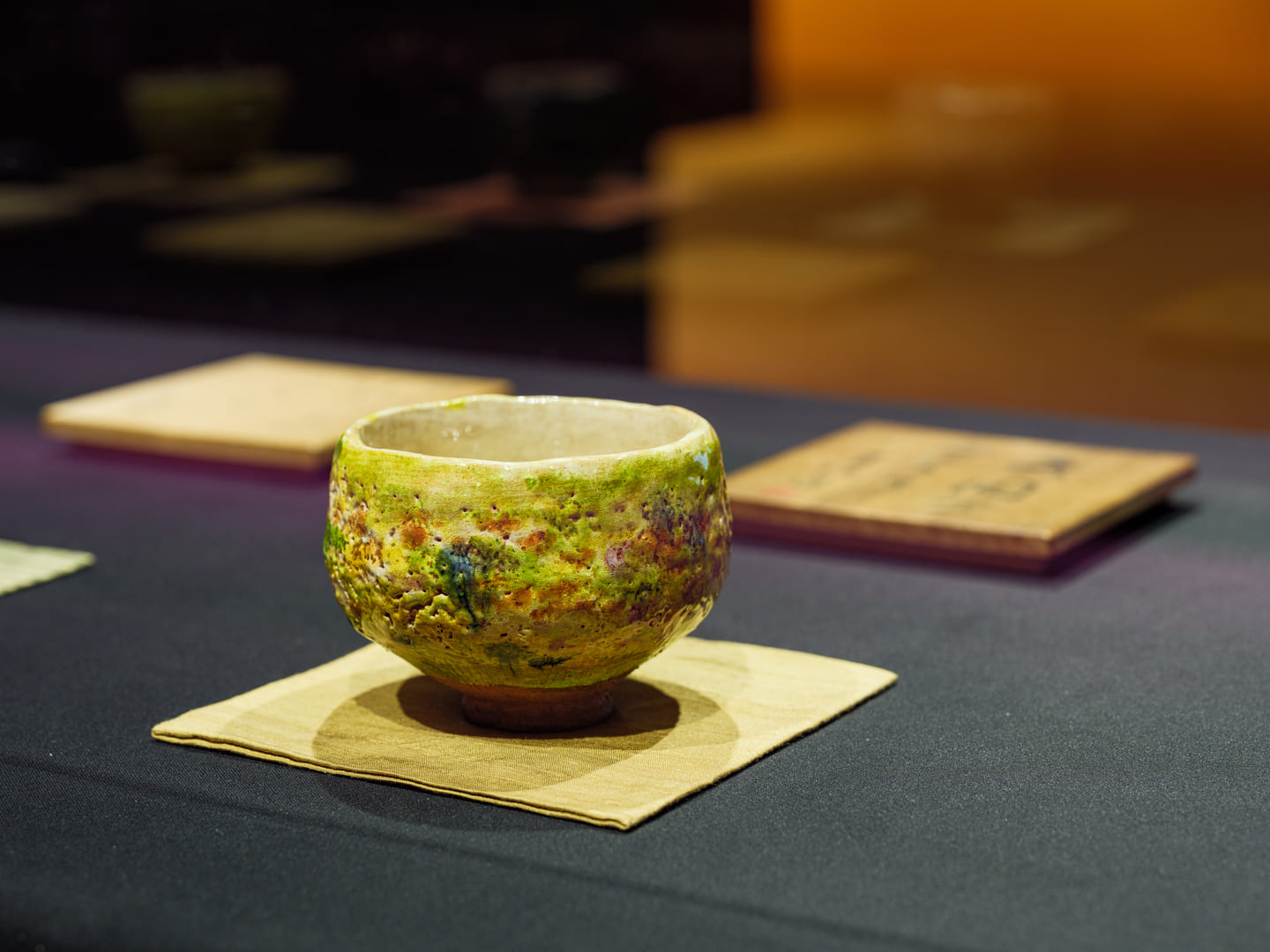
In 1935, the leader of the new Shinto religion Oomoto, Onisaburō Deguchi (1871-1948), was detained by the imperial Japanese regime. During his confinement, he arrived at the idea of making tea bowls: after he was released at the end of 1944, he handmade over 3,000 such pieces in just fifteen months.
“To make each piece of Raku ware,” said Onisaburō, “I recited the prayer words of kannagara [a Shinto expression meaning “according to God’s will”] several thousand times. They are made of fire, water, earth, infused with the power of my spirit.” After his death in 1948, the art critic Giichiro Kato named Onisaburō’s tea bowl the “Yōwan.” When they were exhibited internationally, the historian Arnold Toynbee wrote that in these vessels of divine experience “we can see the manifestation of the principles of a singular world and the beauty of heaven.”
Each tea bowl is presented here with the lid of its wooden box, inscribed with the name given to it by other members of the order (including Naohi Deguchi, its third spiritual leader), and a cloth mat handwoven in Ayabe, Kyoto, the spiritual birthplace of Oomoto. Look closely, and you might see the imprint of Onisaburō’s thumb on one of the tea bowls.
The silent film Shōwa no Shichifukujin—in which the seven lucky gods of the title are played by Onisaburō in elaborate costumes—exemplifies Onisaburō’s pioneering use of new media to spread its word. The calligraphic title cards were handwritten in classical meter by Onisaburō, who also composed the accompanying poems. Most copies of the film were destroyed by the Japanese authorities during its campaign to suppress Oomoto. Yet the movement continues to this day, with art at the heart of its spiritual program.
Onisaburo Deguchi, Yōwan (Scintillating Bowls)—Tamadare (a bamboo blind decorated with balls), ca. 1944. raku pottery tea bowl. 7.9 × 11 × 10.9 cm
Onisaburo Deguchi, Yōwan (Scintillating Bowls)—Ayanishiki (autumn leaves), ca. 1944. raku pottery tea bowl. 8.9 × 10.2 × 11.6 cm
Onisaburo Deguchi, Yōwan (Scintillating Bowls)—Miyama no Sakura (Miyama cherry blossom), ca. 1944. raku pottery tea bowl. 8.4 × 10.4 × 10.6 cm
Onisaburo Deguchi, Yōwan (Scintillating Bowls)—Tengoku 31 (the heavenly kingdom, the 31st), 1944. raku pottery tea bowls. 8.4 × 11.3 × 11.2 cm
Onisaburo Deguchi, Yōwan (Scintillating Bowls)—Miroku (maitreya), ca. 1944. raku pottery tea bowl. 8.3 × 10.5 × 10.6 cm
Onisaburo Deguchi, Yōwan (Scintillating Bowls)—Uzu (spiral), ca. 1944. raku pottery tea bowl. 7.8 × 11.2 × 11.6 cm
Onisaburo Deguchi, Shōwa no Shichifukujin (The Seven Lucky Gods), 1935. 16mm transferred to digital (black and white). 28 min
